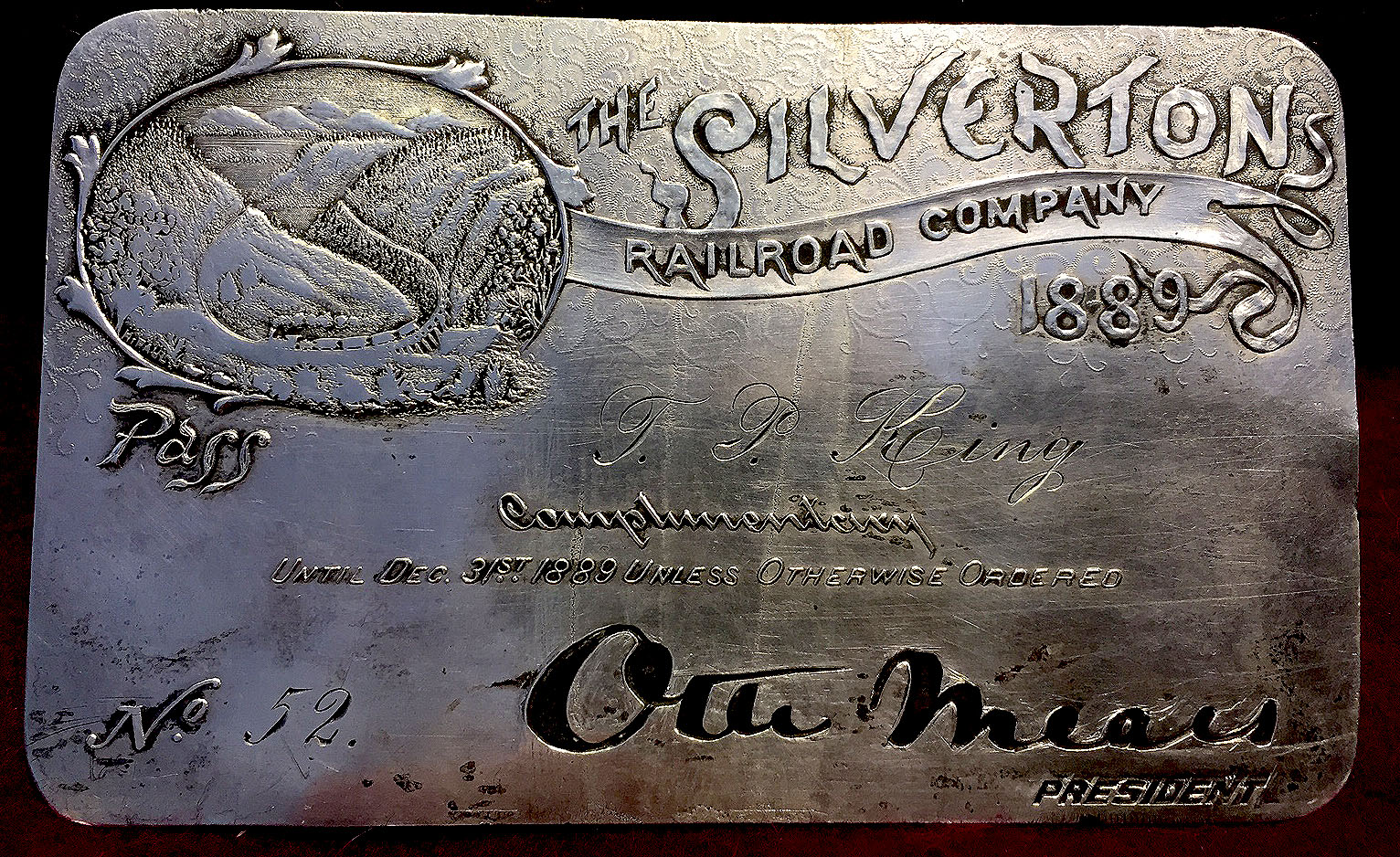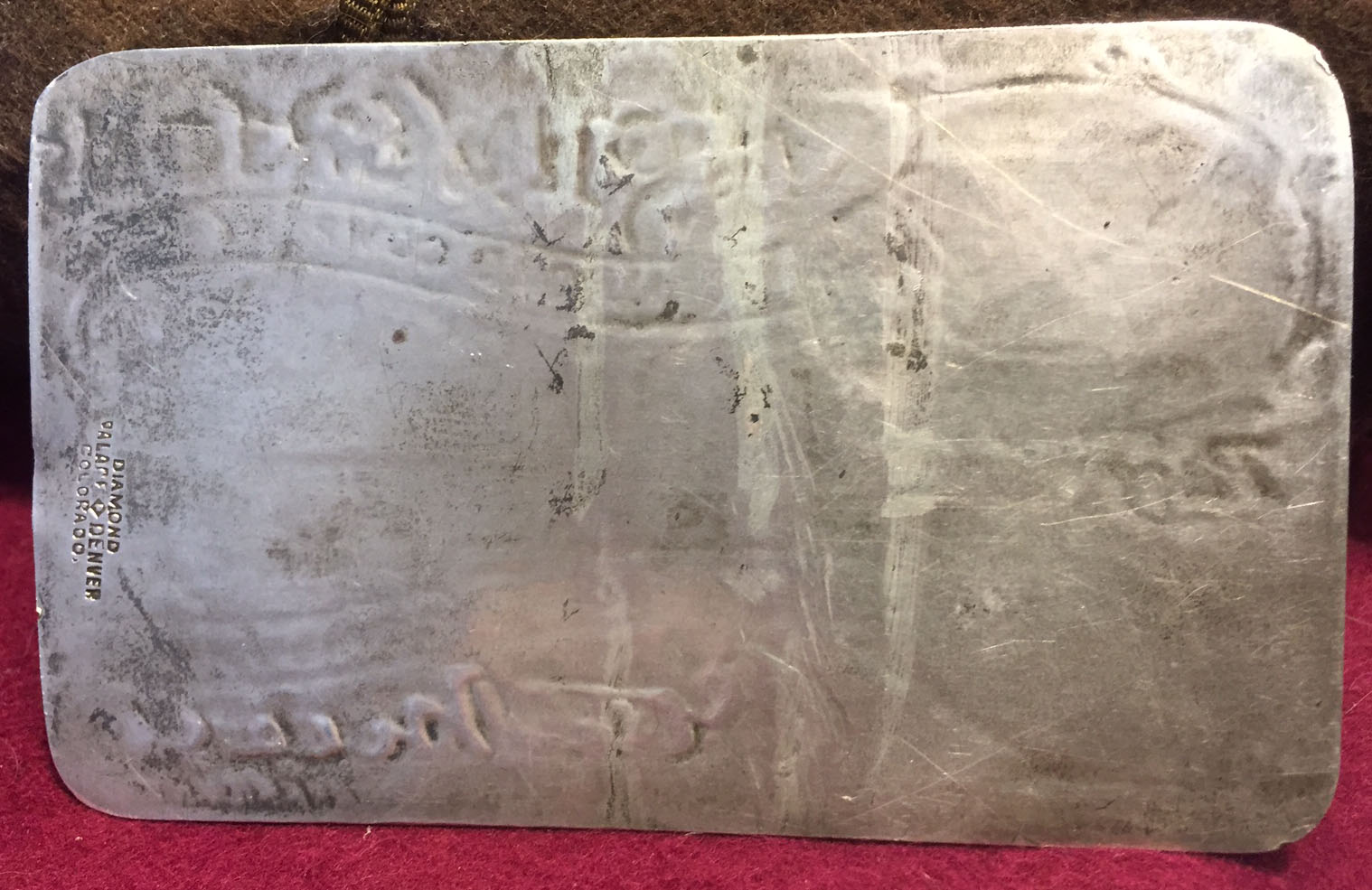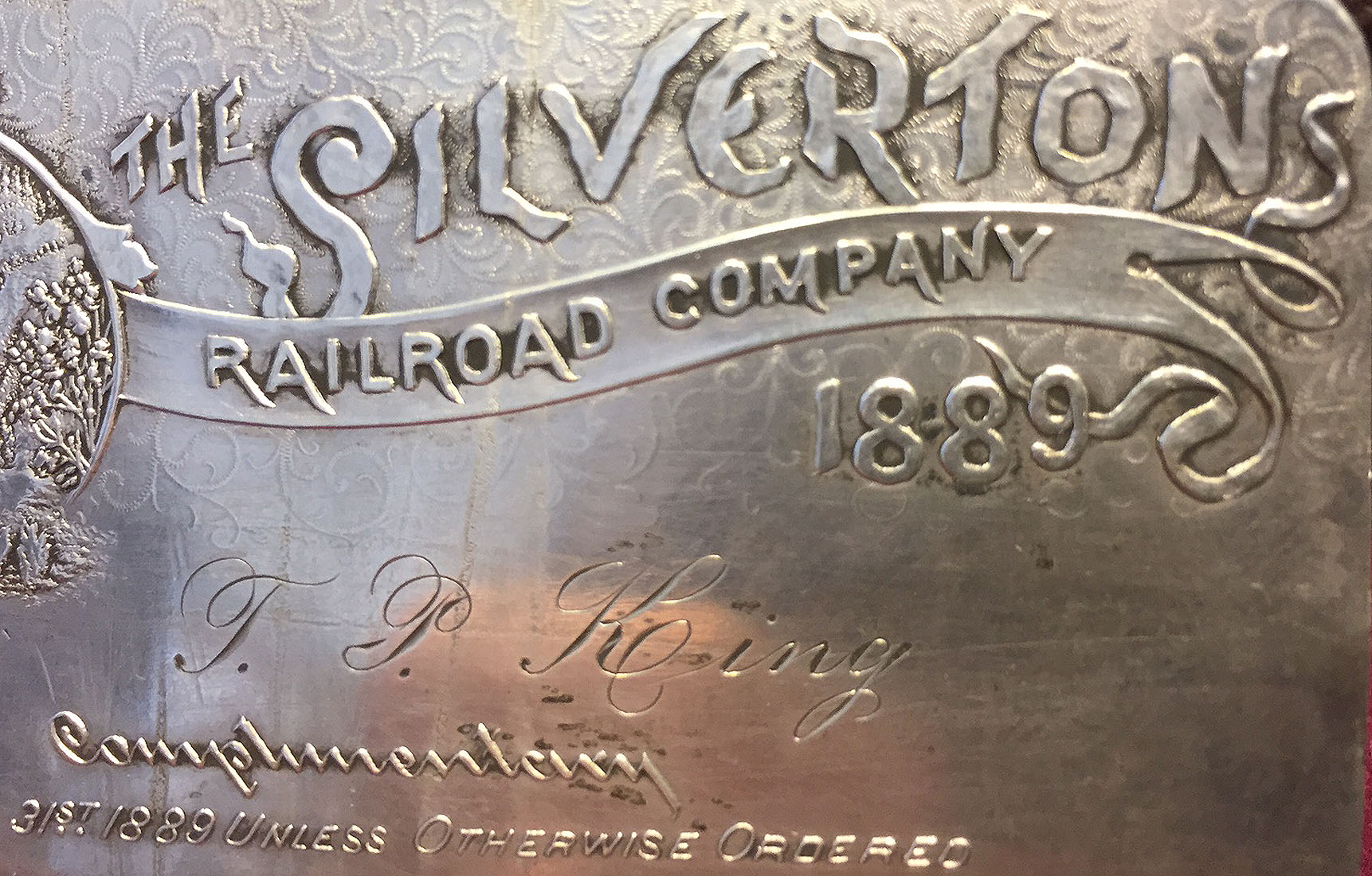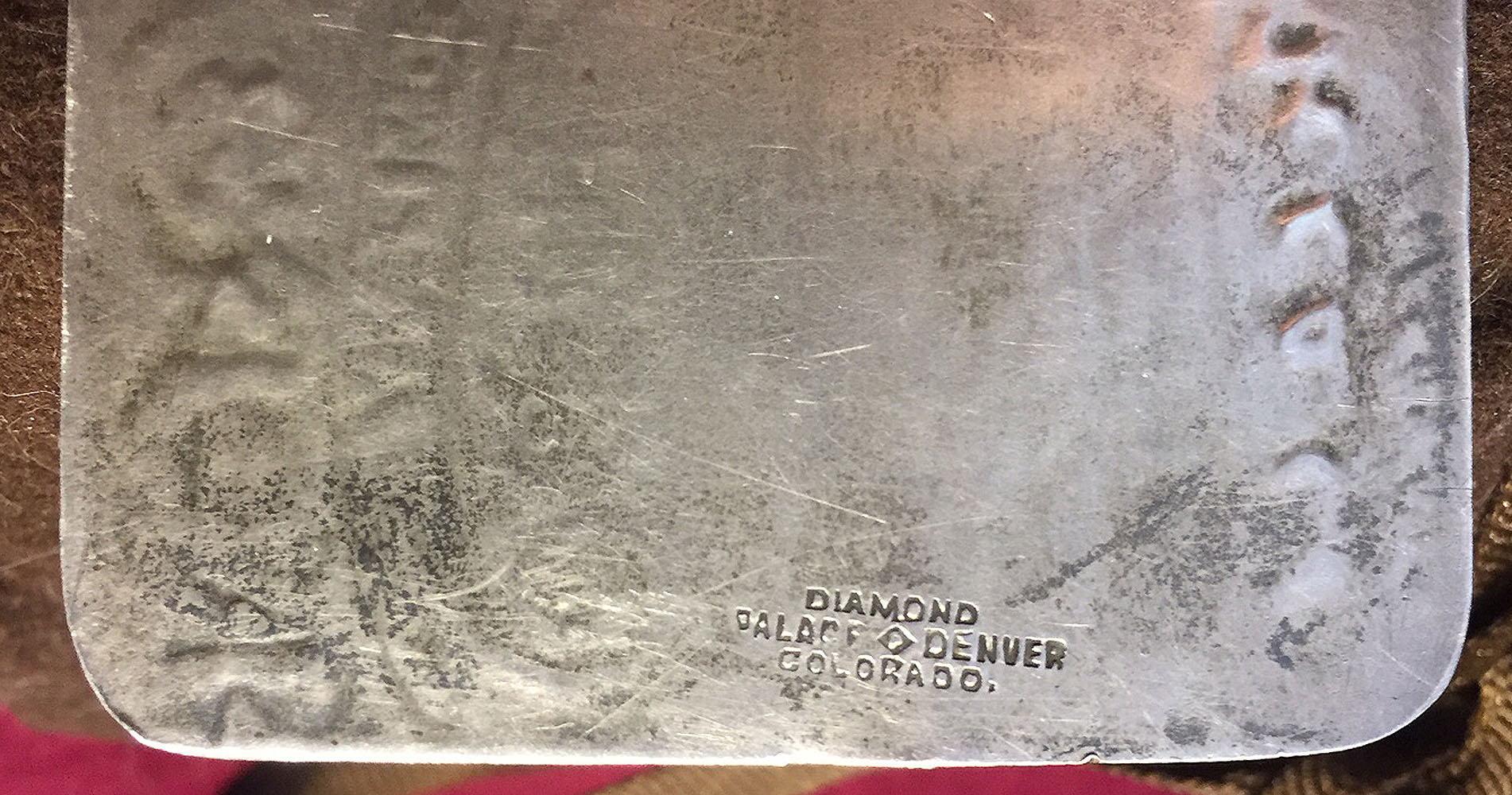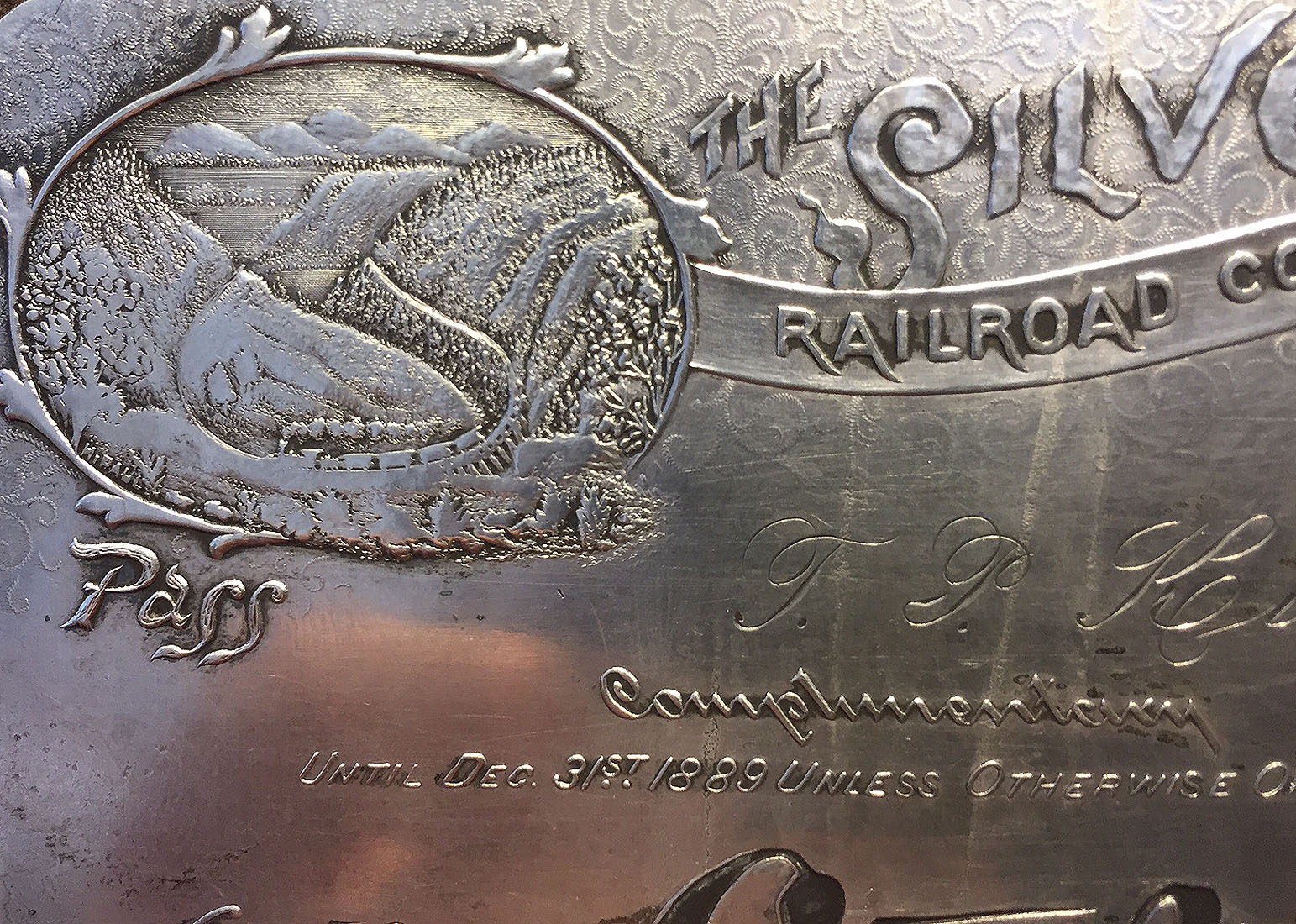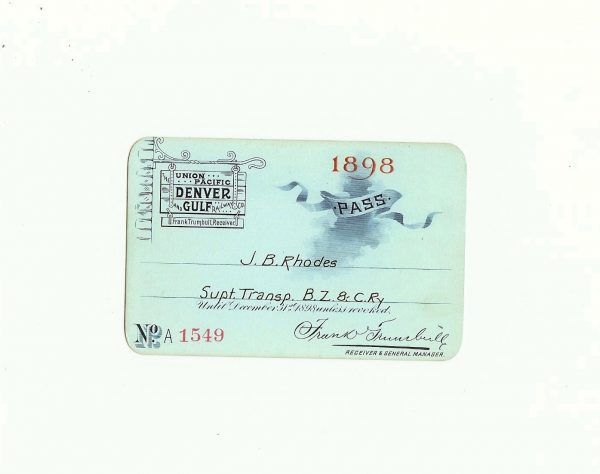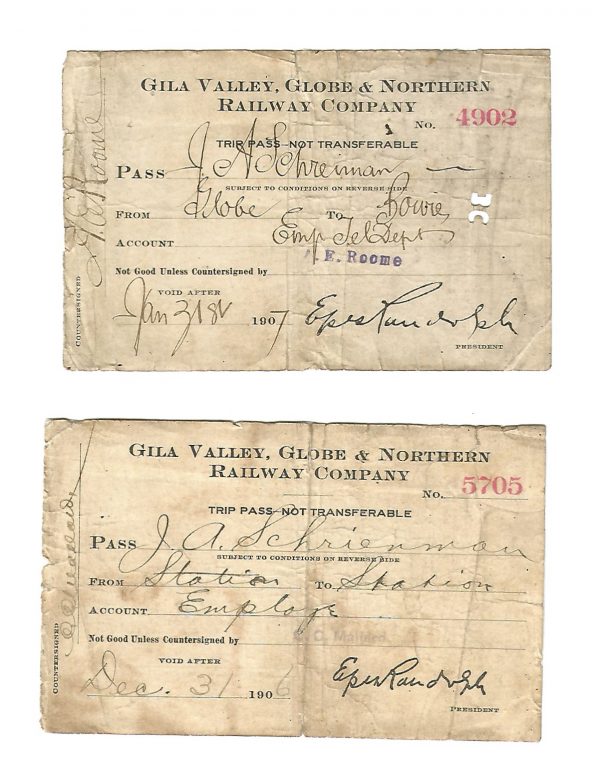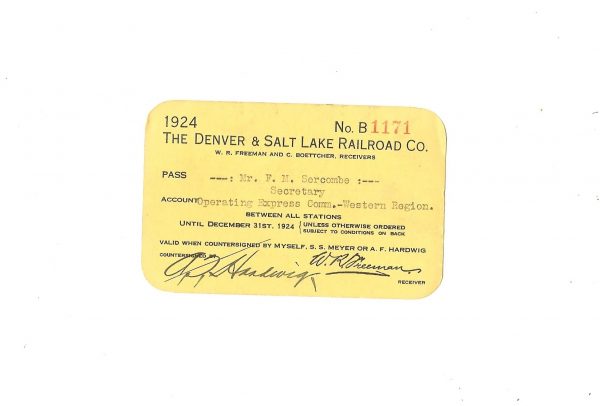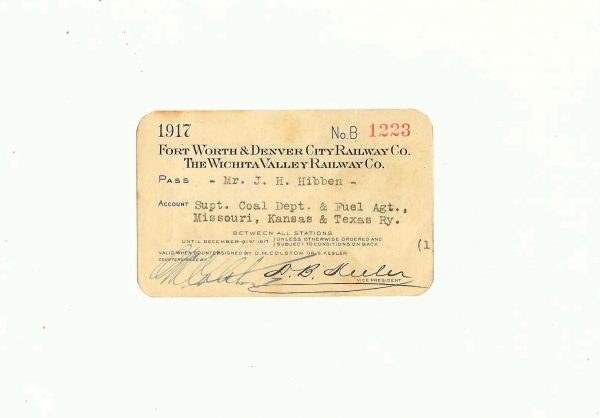The Silverton Railroad Company Silver Pass 1889 Otto Mears
$11,000.00
Stamped silver pass: one ounce of silver; 2.125 inches by 3.5 inches; image represents the Chattanooga Loop on the Silverton route, engraved by H. Paul. Type A of this pass where the Otto Mears signature is imprinted.
Silverton Railroad silver pass #52, issued to T. P. King. Very good plus to near fine condition. Some wear to finer detail.
This pass has seen some wear to the fine detail of the railroad scene in the upper left-hand corner of this pass, Type A.
Stamp of jeweler who made the 1889 Silverton Railroad silver pass for Otto Mears’ company (on obverse of historic pass): Diamond Palace, Denver, Colorado. H. S. Porteous was the proprietor of the Diamond Palace and W. D. Smith was the manager. They listed themselves in Denver’s 1888 City Directory as, ” jobbers and importers of precious stones and watches, manufacturers of jewelry and solid silverware.” Their store was located in Denver’s Opera House Block, at 1008 – 1010 18th Street.
THE SILVERTON RAILROAD COMPANY issued special silver passes in 1889, a marketing concept Otto Mears promoted to increase ridership on his San Juan Mountains railroad. This was such a wonderful idea examples of this historic pass are still highly sought after today.
Otto Mears, an immigrant from Russia and England, arrived in the United States somewhere in the years 1850 – 1851. Born May 3, 1840, Mears was pushed on by family from Kurland, Russia to extended family in England, and then onto further extended family in New York. About 1852 – 1853, Mears was in San Francisco, having traveled via the Isthmus of Panama to stay with uncles.
Mears worked in the family’s tinsmith shop in Walkerville, California; but after a time became anxious for more lucrative and interesting avenues for making a living. He journeyed to Sacramento and was robbed along the way. August 14, 1861: Otto Mears joined Company H of the California Volunteers, to fight in the War of Rebellion. The Company of 101 men was mostly composed of miners. Mears found their stories intriguing and considered venturing into such activities.
Company H was sent to the New Mexico Territory to supplement Kit Carson’s forces, who were fighting the Navajos who had aligned themselves with the Confederate Army. Mears served for over three years and was then discharged at Las Cruces, New Mexico. For a time, Mears stayed in Santa Fe; and then, moved to Conejos, in the Colorado Territory, and opened a store, Mears & Company.
After opening his store in Conejos in 1865, he soon started dealing with the many Native Americans in the area. As his name gained positive repute, he decided to move his operations to the new community of Saguache; and there, in 1867, became Saguache County treasurer. He was known by Territorial Governor Alexander Cummings and ex-Governor William Gilpin. And it wasn’t long before he met Chief Ouray, of the Utes, who was impressed by Mears having learned the Ute language. In 1870, under a partnership with Charles Nachtrieb, Mears oversaw construction of The Poncha Pass Wagon Road.
Additional information
| Weight | 10.0 lbs |
|---|
